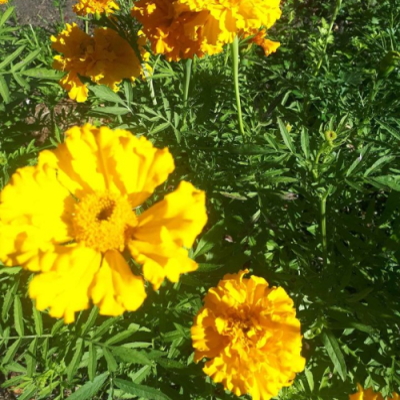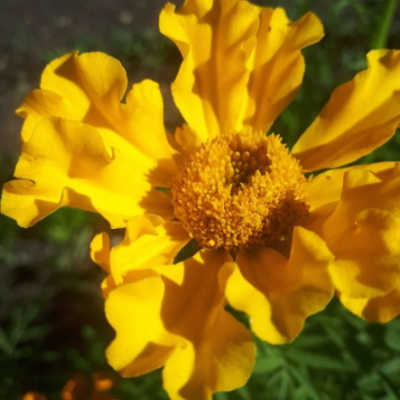Excellent series for cut flower production.
-
 Features tall spires of dense florets. All colours produce double blooms with a small percentage of singles. 3-4 cm florets on 30-40 cm flower spikes. The mix includes; carmine, dark blue, light blue, light pink, lilac, rose, and white. Attracts hummingbirds. Plant height is 90-120 cmAll parts of this plant are poisonous, including the seeds. Exercise extreme caution around children and pets. The purchaser assumes all liability relating to the use of this product.
Features tall spires of dense florets. All colours produce double blooms with a small percentage of singles. 3-4 cm florets on 30-40 cm flower spikes. The mix includes; carmine, dark blue, light blue, light pink, lilac, rose, and white. Attracts hummingbirds. Plant height is 90-120 cmAll parts of this plant are poisonous, including the seeds. Exercise extreme caution around children and pets. The purchaser assumes all liability relating to the use of this product. -
-
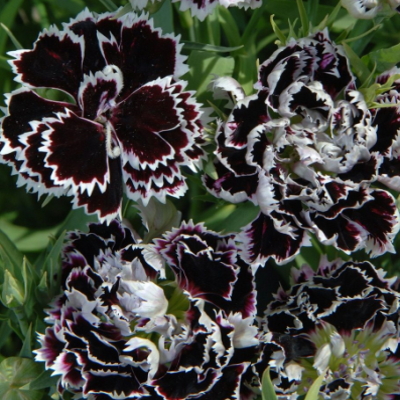 Hardy annual. Dainty, fully double blooms in deepest maroon, almost black, edged in brilliant white. The margins of the petals are heavily frilled, and the overall effect is one of great dignity and refinement, yet stunning beauty. The 2-3 cm blooms are sweetly fragrant. Makes a fine cut flower but really shines in a massed planting. Compact plants, the flowers are held above the grass-like foliage, reaching about a foot in height.
Hardy annual. Dainty, fully double blooms in deepest maroon, almost black, edged in brilliant white. The margins of the petals are heavily frilled, and the overall effect is one of great dignity and refinement, yet stunning beauty. The 2-3 cm blooms are sweetly fragrant. Makes a fine cut flower but really shines in a massed planting. Compact plants, the flowers are held above the grass-like foliage, reaching about a foot in height. -
Out of stock
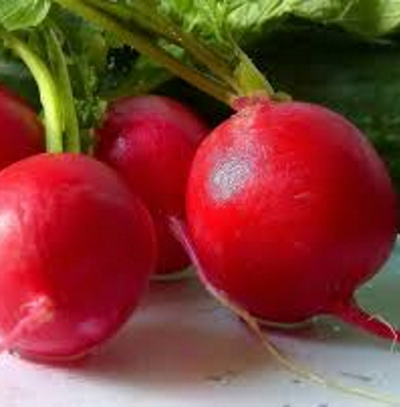 These tasty and fast-growing heirloom radishes are round to globe-shaped and a brilliant cherry- red in color. They are renowned for their juicy, tender-crisp mild flesh and adaptability to a wide variety of conditions. Sow the fast-growing seeds in, wherever you have a little space as they’ll be ready in no time. Enjoy these as fresh snacks and slice into salads. About the size of a small apple, they're great snacks for everyone.
These tasty and fast-growing heirloom radishes are round to globe-shaped and a brilliant cherry- red in color. They are renowned for their juicy, tender-crisp mild flesh and adaptability to a wide variety of conditions. Sow the fast-growing seeds in, wherever you have a little space as they’ll be ready in no time. Enjoy these as fresh snacks and slice into salads. About the size of a small apple, they're great snacks for everyone. -
Out of stock
 Also known as mountain spinach, this green has been cultivated since Roman times. Harvest young leaves 3-7 cm long for fresh use. Larger leaves are often used steamed. A colorful and nutritious addition to salads. Leaves can continue to be harvested until the plant goes to seed. Can be grown into summer somewhat longer than true spinach. Germinated in 7-14 days. Maturity from 20 to 60 days.
Also known as mountain spinach, this green has been cultivated since Roman times. Harvest young leaves 3-7 cm long for fresh use. Larger leaves are often used steamed. A colorful and nutritious addition to salads. Leaves can continue to be harvested until the plant goes to seed. Can be grown into summer somewhat longer than true spinach. Germinated in 7-14 days. Maturity from 20 to 60 days. -
Out of stock
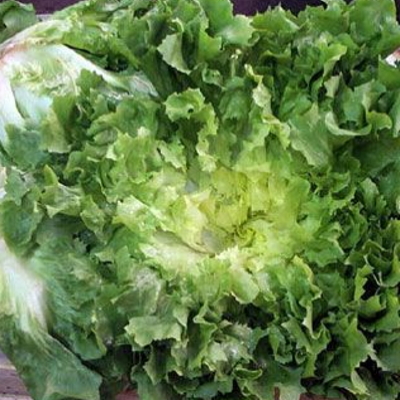 This escarole type of endive has dark green leaves that are broad, coarse and crumpled in appearance but not curly. Popular as an addition to any salad or may be cooked as greens. Harvest as you would lettuce by cutting them just below the lower leaves. They will withstand a touch of frost but not a hard freeze.
This escarole type of endive has dark green leaves that are broad, coarse and crumpled in appearance but not curly. Popular as an addition to any salad or may be cooked as greens. Harvest as you would lettuce by cutting them just below the lower leaves. They will withstand a touch of frost but not a hard freeze. -
Out of stock
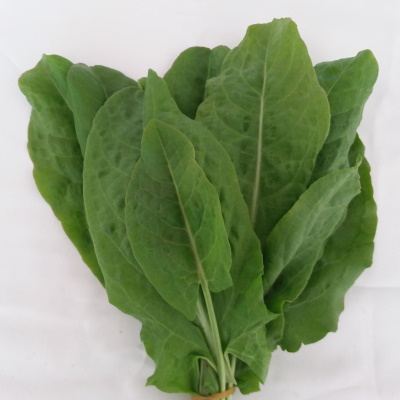
The herbal lemony flavor of sorrel makes a great addition to salads, sauces, or soups. A famed companion to fish. Will produce the most tender leaves in cool weather. Sow in spring or fall. Once established, can be propagated by root division. Hardy in zone 4-8. Perennial.
-
Out of stock

A stellar bulbing Florence fennel with an excellent sweet anise-like flavor that mellows with cooking. Selma Fino is usually the sweetest tasting. Takes about 80 days to form full-sized bulbs, however, it can be harvested sooner at a smaller size. Very white bulbs are fairly uniform and won’t prematurely bolt if planted in spring. Tops can be used as a fresh herb, adding a mellow fennel flavor to dishes or salads. Unique compared to other bulb type fennel, some plants have a perennial nature. The flowers are highly attractive to bees and other beneficial insects. Fennel leaves, florets, and seeds can be used for culinary purposes as an herb.
-
Out of stock
 A much-loved heirloom cabbage with solidly tight, conical, folded heads 13-18cm in diameter, and 26-39cm tall. Planted individually, Early Jersey Wakefield cabbage seeds will form a plant up to 1m in diameter. This cabbage has smooth, thick green leaves that are perfect for coleslaw. They can be harvested in summer or overwintered, and they resist splitting in wet weather. Early Jersey Wakefield cabbage seeds were first grown in the U.S. by Francis Brill of Jersey City in 1840.
A much-loved heirloom cabbage with solidly tight, conical, folded heads 13-18cm in diameter, and 26-39cm tall. Planted individually, Early Jersey Wakefield cabbage seeds will form a plant up to 1m in diameter. This cabbage has smooth, thick green leaves that are perfect for coleslaw. They can be harvested in summer or overwintered, and they resist splitting in wet weather. Early Jersey Wakefield cabbage seeds were first grown in the U.S. by Francis Brill of Jersey City in 1840. -
-
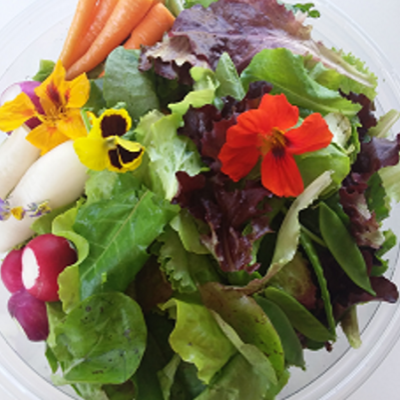 Nasturtium is a cheerful, easy, quick-growing annual flower! They’re colorful, edible flowers, and good for kids to plant. Salad Blend nasturtiums feature spurless, half-double flowers in tangerine, soft salmon, deep gold, deep mahogany, bright scarlet, cream, and cherry-rose. Pick and wash a handful of these bright summer flowers and just tear them into pieces over a summer salad. The result transforms a simple salad into a work of art. They’re also great for companion planting as a fantastic trap crop; the mustard oil they produce is adored by garden pests. After seeding, plants appear in 7 to 10 days.
Nasturtium is a cheerful, easy, quick-growing annual flower! They’re colorful, edible flowers, and good for kids to plant. Salad Blend nasturtiums feature spurless, half-double flowers in tangerine, soft salmon, deep gold, deep mahogany, bright scarlet, cream, and cherry-rose. Pick and wash a handful of these bright summer flowers and just tear them into pieces over a summer salad. The result transforms a simple salad into a work of art. They’re also great for companion planting as a fantastic trap crop; the mustard oil they produce is adored by garden pests. After seeding, plants appear in 7 to 10 days. -
Out of stock
 These sweet, crisp napa cabbages are ideal for salads and a mainstay of the stir-fry, great for cabbage rolls too. Direct sow in summer with the last planting about 10 weeks before frost. A great hardy plant that withstands some cold and can stay in the garden until late October early November or until the weather gets severe. Small plants will bolt if exposed to temperatures under 10 C for 7-14 days. Early spring crops and late fall crops should be covered with clothe covers to ensure heavy heads.
These sweet, crisp napa cabbages are ideal for salads and a mainstay of the stir-fry, great for cabbage rolls too. Direct sow in summer with the last planting about 10 weeks before frost. A great hardy plant that withstands some cold and can stay in the garden until late October early November or until the weather gets severe. Small plants will bolt if exposed to temperatures under 10 C for 7-14 days. Early spring crops and late fall crops should be covered with clothe covers to ensure heavy heads. -
Out of stock
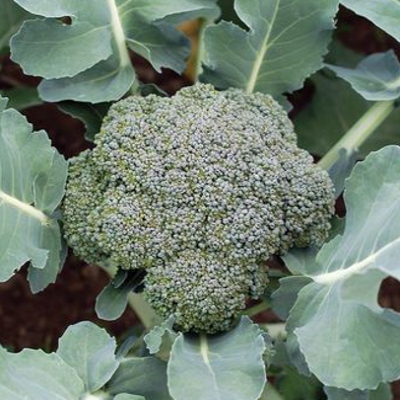 Blue Winds Broccoli is the most popular broccoli. This extra-early maturing broccoli produces impressively large, tightly beaded heads. The large plants are tightly beaded and sport powdery light blue foliage. They have strong-stems with densely packed heads. After harvesting of main head, Blue Winds Brocolli has good side shoot production will supply a continued harvest of delicious florets! One of the only hybrid crops we grow!
Blue Winds Broccoli is the most popular broccoli. This extra-early maturing broccoli produces impressively large, tightly beaded heads. The large plants are tightly beaded and sport powdery light blue foliage. They have strong-stems with densely packed heads. After harvesting of main head, Blue Winds Brocolli has good side shoot production will supply a continued harvest of delicious florets! One of the only hybrid crops we grow! -
Out of stock
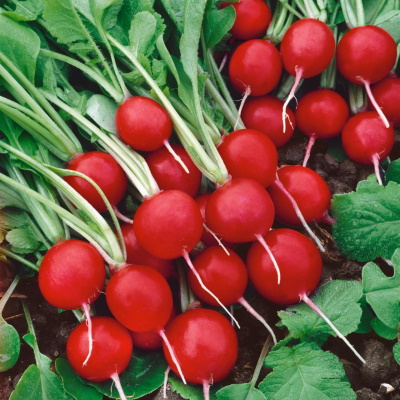
Early, organic, round red radish.
Try leaving some to grow seed pods which are delicious in salads or save your seeds for future plantings. Radishes thrive in very loose rich soil, plenty of water, and best grown in cooler weather.Roots are bright red, smooth, and uniform with good flavor. Best for spring and fall plantings. Crops sown in hot weather tend to produce roots that are less uniform and become pithy earlier than hybrids.
-
Out of stock
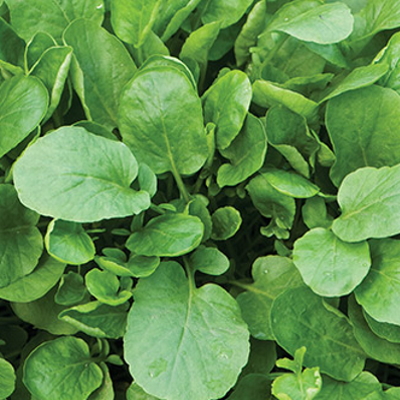
Upland Cress is slow to start but, once established, easy to grow. Long-standing and slow bolting. Harvest by cutting individual leaves or by picking the 15-18 cm rosettes of dark green, glossy, rounded leaves. Salad's come to life with the nutrient-packed upland cress leaves added. Cut the leaves when they are 2-5 cm tall. The leaves grow back in 2-3 weeks. Harvest as desired through the growing season.
Many common names of Barbarea verna are )Upland or Winter Cress), Early Yellow-rocket, Early Yellowrocket, Land Cress, Peppergrass, Upland Cress, Winter Cress -
Out of stock
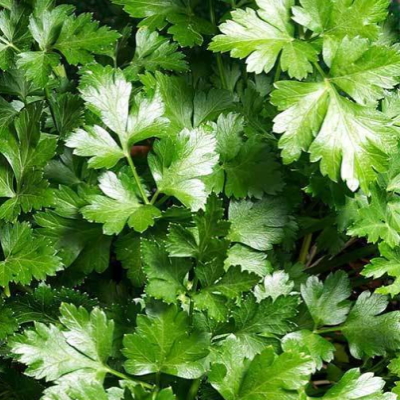 Biennial that is usually grown as an annual. We have found that this parsley dies back in the winter but new leaves emerge before the snow melts. Deeply cut bright green leaves. Italian parsley is reputed to have better flavor than the many curled varieties. Holds flavour when dried. Height 30-60 cm
Biennial that is usually grown as an annual. We have found that this parsley dies back in the winter but new leaves emerge before the snow melts. Deeply cut bright green leaves. Italian parsley is reputed to have better flavor than the many curled varieties. Holds flavour when dried. Height 30-60 cm -
Out of stock
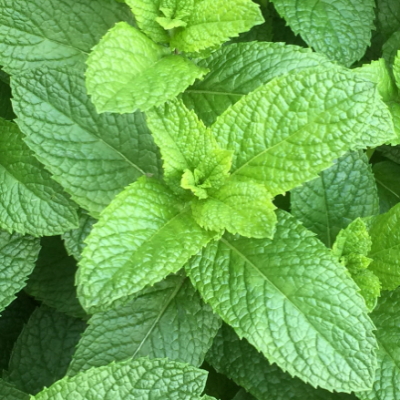 Spearmint came to North America with the Colonists. They used mint teas medicinally for headaches, indigestion and to help them sleep. Mint is also an excellent culinary addition and makes a great tea for the pure pleasure of it. As a general rule, mint family plants root vigorously when allowed to grow freely and can be invasive. Many gardeners grow them in containers to keep them in check.
Spearmint came to North America with the Colonists. They used mint teas medicinally for headaches, indigestion and to help them sleep. Mint is also an excellent culinary addition and makes a great tea for the pure pleasure of it. As a general rule, mint family plants root vigorously when allowed to grow freely and can be invasive. Many gardeners grow them in containers to keep them in check. -
Out of stock
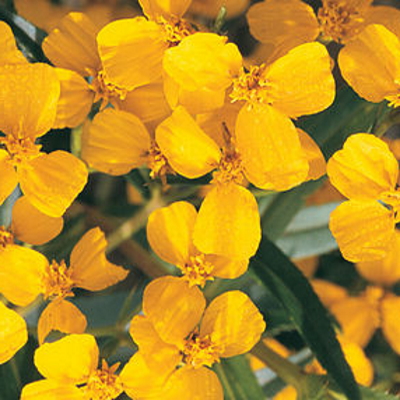
Aromatic leaves are a substitute for French tarragon. Sweet licorice flavor brightens salads and main dishes. The edible, pretty, golden-yellow flowers bloom all summer. Also known as sweet mace or Mexican tarragon. Grows well in sunny hot locations. Try adding to hanging baskets grows 40-55 cm.
-
Out of stock
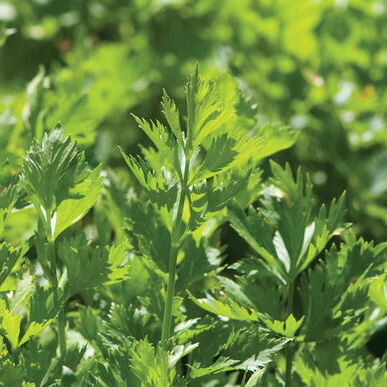
Leafy herb with bold celery flavor. Easier to grow than standard celery. A versatile ingredient for salads, soups, stews, and vegetable medleys. More intense flavour (both fresh and dried) than garden celery.
-
Out of stock
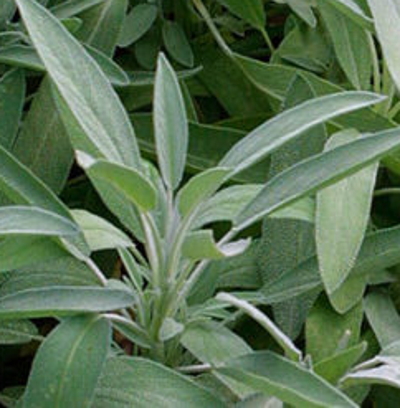
A staple of the herb garden. Dusty, green leaves are used in dressing, sauces, salted herbs, sausage, and tea. Make a good base for dried floral wreaths. Also known as garden sage. Perennial in Zones 4-8.
-
Out of stock
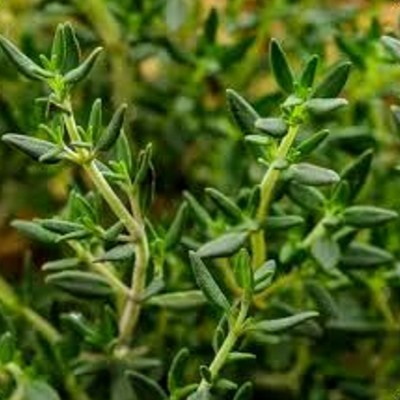
Thyme seeds produce a tasty herb that compliments poultry and other meat dishes and is used extensively in stews, sauces, and marinades. Thyme grows relatively slowly at first but once established, it grows with vigour! This variety of thyme is relatively low growing at 15-30 cm in height.
-
Out of stock
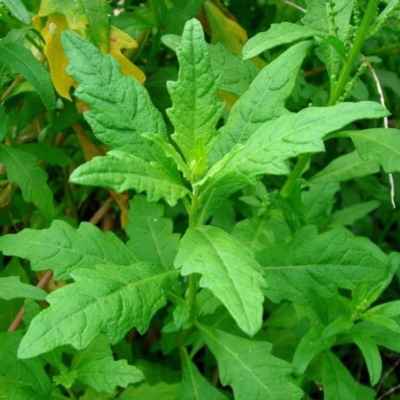
This annual Mexican herb has a pungent aroma, spear-shaped, deeply toothed leaves, and green flowers. It is also known as Wormseed, American Wormseed, Mexican Tea or Herba Sancti Mariae. Epazote's (eh-pah-ZOH-teh) fragrance is strong and pungent. It has been compared to citrus, petroleum, savory, mint, or camphor. It smells pretty strong, but we have found that it does add a wonderful depth of flavor to a pot of beans! With its strong taste and aroma, not everyone takes to it right away, but used as a spice, it adds a wonderful rustic layer of flavor to many Mexican and Latin American dishes, giving them an extra dimension of flavor that just can’t be replicated with any other herb – very similar to the “umami” flavors of fermented Asian ingredients. Epazote leaves are used for their pungent flavor and aroma to season soup, corn, beans, and shellfish in Mexico. It is used in beans to prevent flatulence. It is also brewed for "Jesuit Tea" but the herb's main use is to expel intestinal worms from humans and animals. Oil of chenopodium is derived from this plan.
-
Out of stock
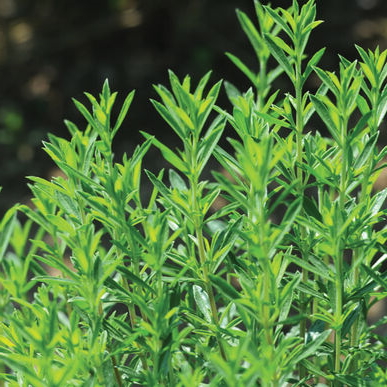
Perennial cousin to summer savory, with thicker and shinier leaves. The flavour is more pungent and biting. Has a higher proportion of thymol than summer savory. This herb is great for culinary uses, however, just as important is its use to attract bees while repelling aphids, and cabbage moths.
-
Out of stock
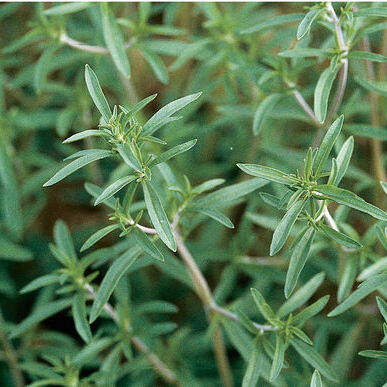
Pepper flavor adds spice to dishes. Long internodes create a tall, somewhat lanky plant. Harvest when buds begin and hang to dry. If you don't have Summer Savory in your garden it's a great time to give it a try. Excellent for all your hearty stews and soups. It's one of our favourite "go to" herbs.
-
Out of stock
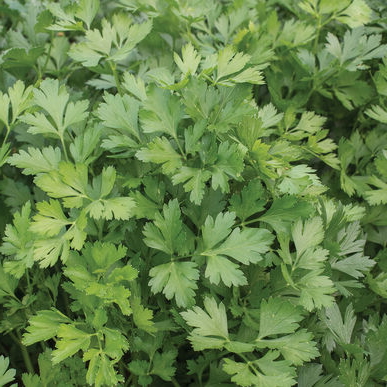
The preferred culinary variety. This parsley is great for so many cooked dishes when a deep true parsley flavour is preferred. The best parsley to dry or freeze. Huge, dark green leaves with great flavor. Strong, upright stems make Giant of Italy one of the best parsley varieties for fresh market sales. Very high yielding. Height 45-60 cm
-
Out of stock
 There is a very good reason why Red Salad Bowl is among the most popular lettuces. Red Salad Bowl is a variety of looseleaf lettuce with oakleaf type leaves. The deep red and purple leaves are especially tender, with sweet and spicy tones. Red Salad Bowl is best grown during the cooler portions of the growing season in spring or fall, though it is slow to bolt in warmer conditions. The leaves are commonly used in salads. The baby greens can first be harvested approximately 25 days after germinating. Try growing some in containers,
There is a very good reason why Red Salad Bowl is among the most popular lettuces. Red Salad Bowl is a variety of looseleaf lettuce with oakleaf type leaves. The deep red and purple leaves are especially tender, with sweet and spicy tones. Red Salad Bowl is best grown during the cooler portions of the growing season in spring or fall, though it is slow to bolt in warmer conditions. The leaves are commonly used in salads. The baby greens can first be harvested approximately 25 days after germinating. Try growing some in containers, -
Out of stock
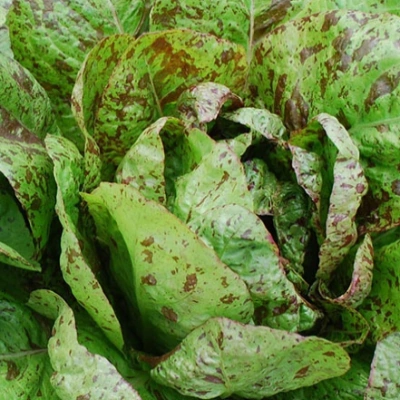 Such a great looking and flavoured Romaine lettuce to have in your garden and in for a salad. The maroon freckles stand out on the glossy green leaves.
Such a great looking and flavoured Romaine lettuce to have in your garden and in for a salad. The maroon freckles stand out on the glossy green leaves. -
Out of stock
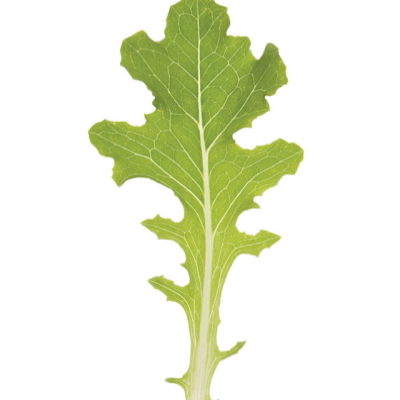 The unique and varied oak style leaf of Bolsachica Organic adds loft and character to baby leaf salad mixes. The leaves are medium to dark green and a bit thicker than others. They grow almost straight upright which makes baby leaf harvesting much easier. Grow this baby leaf lettuce in trays or containers. Cut outside leaves and let inside leaves for future harvests.
The unique and varied oak style leaf of Bolsachica Organic adds loft and character to baby leaf salad mixes. The leaves are medium to dark green and a bit thicker than others. They grow almost straight upright which makes baby leaf harvesting much easier. Grow this baby leaf lettuce in trays or containers. Cut outside leaves and let inside leaves for future harvests. -
Out of stock
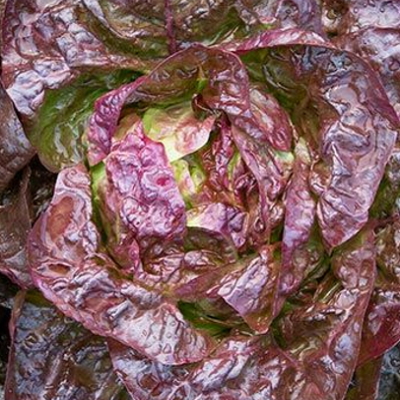 Uniform red butterhead with thick, slightly ruffled Cabernet colored leaves. Dark red outer leaves with a beautiful bright green heart. The leaves are shiny, dense, and durable, making them resistant to damage during washing and handling. Plants keep well in the field throughout the season and do not get bitter with heat.
Uniform red butterhead with thick, slightly ruffled Cabernet colored leaves. Dark red outer leaves with a beautiful bright green heart. The leaves are shiny, dense, and durable, making them resistant to damage during washing and handling. Plants keep well in the field throughout the season and do not get bitter with heat. -
Out of stock
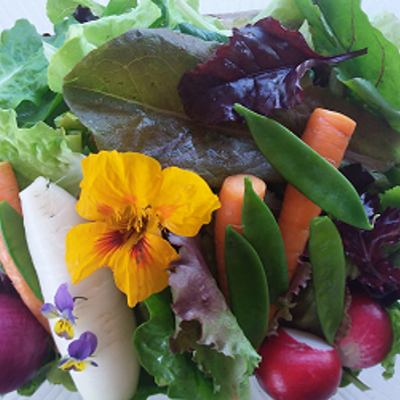
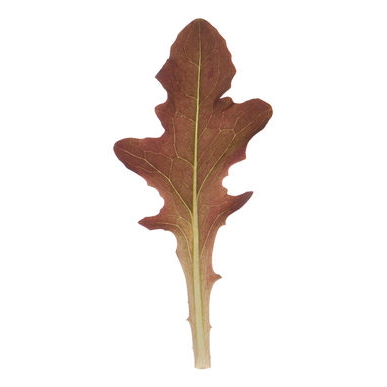 This certified organic lettuce is wonderful lettuce for those who enjoy tender baby leaf lettuce. This is a wonderful organic "cut and come again lettuce". One of the nicest lettuces, it adds a nice colour to a mixed salad, or have a salad using just Blade Organic. Pick the oak shaped leaves at 15 cm to keep to promote new growth throughout the growing season. Plant Blade Organic every 2 weeks from April until September for fresh new growth. May be started indoors 6 weeks before the last frost and planted out into the garden when 4 true leaves form.
This certified organic lettuce is wonderful lettuce for those who enjoy tender baby leaf lettuce. This is a wonderful organic "cut and come again lettuce". One of the nicest lettuces, it adds a nice colour to a mixed salad, or have a salad using just Blade Organic. Pick the oak shaped leaves at 15 cm to keep to promote new growth throughout the growing season. Plant Blade Organic every 2 weeks from April until September for fresh new growth. May be started indoors 6 weeks before the last frost and planted out into the garden when 4 true leaves form. -
Out of stock

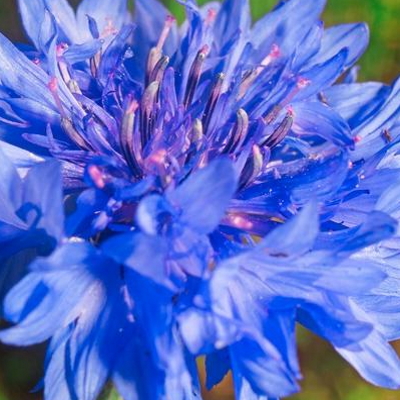 Bachelor's Button or Cornflower-It's hard to beat the colours of the bachelor's button. It got the name "cornflower" because it grew as a weed in cornfields, but you may welcome it in your garden. It does spread, but it is easy to pull out any extras. This tall 90 cm mix comes in the colours of purple, blue, pink and white provide papery blossoms that bring summer colour to the garden. They're attractive planted in a group in a corner or open spot in the garden. Deadhead regularly to prolong blooming. Plant periodically over spring to prolong bloom times.
Bachelor's Button or Cornflower-It's hard to beat the colours of the bachelor's button. It got the name "cornflower" because it grew as a weed in cornfields, but you may welcome it in your garden. It does spread, but it is easy to pull out any extras. This tall 90 cm mix comes in the colours of purple, blue, pink and white provide papery blossoms that bring summer colour to the garden. They're attractive planted in a group in a corner or open spot in the garden. Deadhead regularly to prolong blooming. Plant periodically over spring to prolong bloom times. -
Out of stock
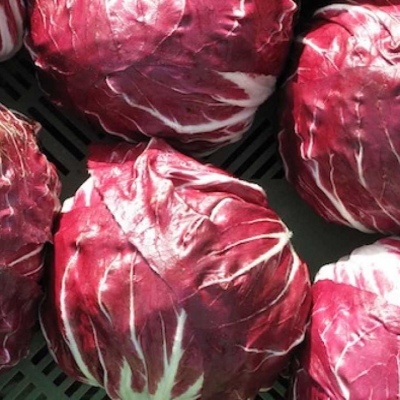 Although this is called a challenging crop to grow, it is not quite so challenging in the Calgary climate. It does take a bit more work but the use of the young leaves then heads later makes the work more than worthwhile. The young fresh heads are a visual delight for the eyes and a culinary treat for the taste buds! A spreading, leafy plant producing open, round heads 5-10 cm in diameter. Beautiful dark red leaves that withstand considerable frost. Follow our planting instructions for our foolproof method of growing great Radicchio. A cold frame or a basement is all that's needed to enjoy these culinary delights.
Although this is called a challenging crop to grow, it is not quite so challenging in the Calgary climate. It does take a bit more work but the use of the young leaves then heads later makes the work more than worthwhile. The young fresh heads are a visual delight for the eyes and a culinary treat for the taste buds! A spreading, leafy plant producing open, round heads 5-10 cm in diameter. Beautiful dark red leaves that withstand considerable frost. Follow our planting instructions for our foolproof method of growing great Radicchio. A cold frame or a basement is all that's needed to enjoy these culinary delights. -
Out of stock
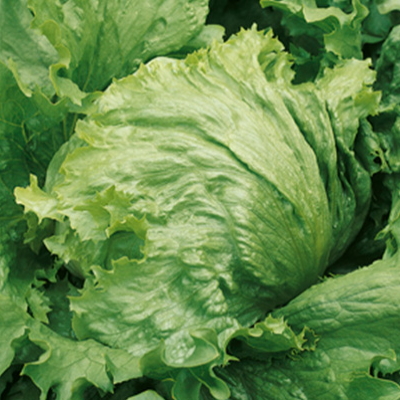 This small iceberg lettuce is compact small heads and is great for small families. It matures quickly and tolerates the heat well, so plant in intervals throughout the season to keep a fresh supply. Pick early in the morning for crisp fresh lettuce on hand. Nice dark green leaves have a crisp, sharp flavour. High resistance to downy mildew.
This small iceberg lettuce is compact small heads and is great for small families. It matures quickly and tolerates the heat well, so plant in intervals throughout the season to keep a fresh supply. Pick early in the morning for crisp fresh lettuce on hand. Nice dark green leaves have a crisp, sharp flavour. High resistance to downy mildew. -
Out of stock
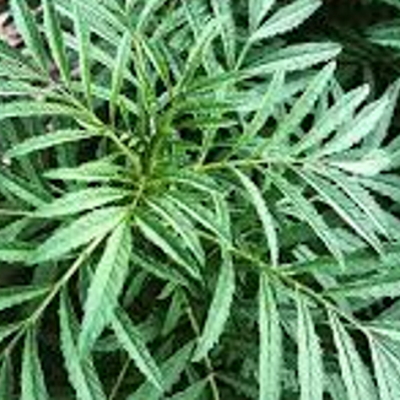 Peruvian Black Mint a.k.a Huacatay. Meet corianders closest cousin, Peruvian Black Mint gives hope to those who intensely dislike coriander. The soft, lacy leaves of this Andean relative of the marigold have a bright, fresh, intensely aromatic fragrance. This herb is ridiculously easy to grow, helps kills some perennial weed roots, and deters all kinds of pests and bugs. Related to marigold but with tiny flowers and is drought resistant. This herb is not only used for its culinary purposes it is essential when it comes to deterring pests, especially in mustard crops like radishes.
Peruvian Black Mint a.k.a Huacatay. Meet corianders closest cousin, Peruvian Black Mint gives hope to those who intensely dislike coriander. The soft, lacy leaves of this Andean relative of the marigold have a bright, fresh, intensely aromatic fragrance. This herb is ridiculously easy to grow, helps kills some perennial weed roots, and deters all kinds of pests and bugs. Related to marigold but with tiny flowers and is drought resistant. This herb is not only used for its culinary purposes it is essential when it comes to deterring pests, especially in mustard crops like radishes. -
Out of stock
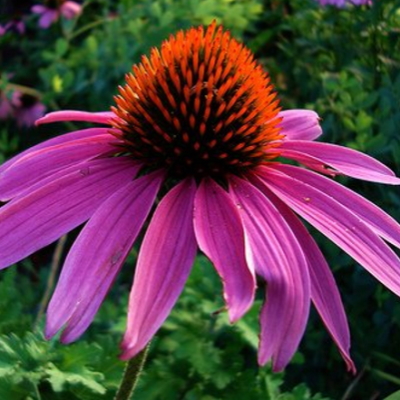 Purple coneflowers are found in many flower gardens. Purple coneflower (Echinacea purpurea) in the garden or flower bed draws bees and butterflies, ensuring that nearby plants have plenty of pollinators. The plant also provides a tall background or repeating rows of large (often 6 inches across) purple, daisy-like flowers. The sturdy stalks, which may reach 5 feet in height, rarely bend or require staking for an upright appearance. Coneflower plants may actually display pink flowers, when the cultivar Echinacea purpurea ‘Pink Double Delight’ is planted.
Purple coneflowers are found in many flower gardens. Purple coneflower (Echinacea purpurea) in the garden or flower bed draws bees and butterflies, ensuring that nearby plants have plenty of pollinators. The plant also provides a tall background or repeating rows of large (often 6 inches across) purple, daisy-like flowers. The sturdy stalks, which may reach 5 feet in height, rarely bend or require staking for an upright appearance. Coneflower plants may actually display pink flowers, when the cultivar Echinacea purpurea ‘Pink Double Delight’ is planted. -


